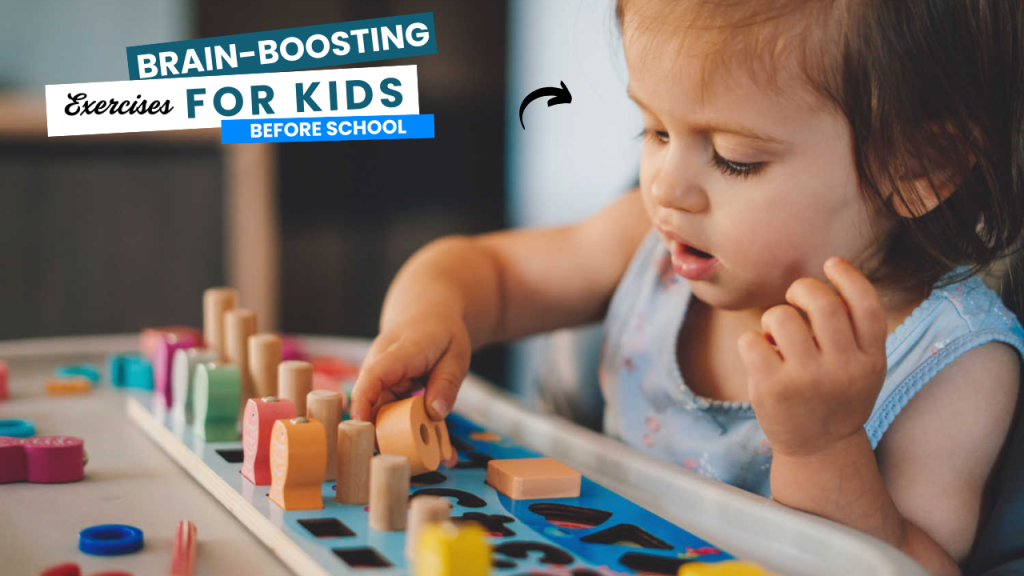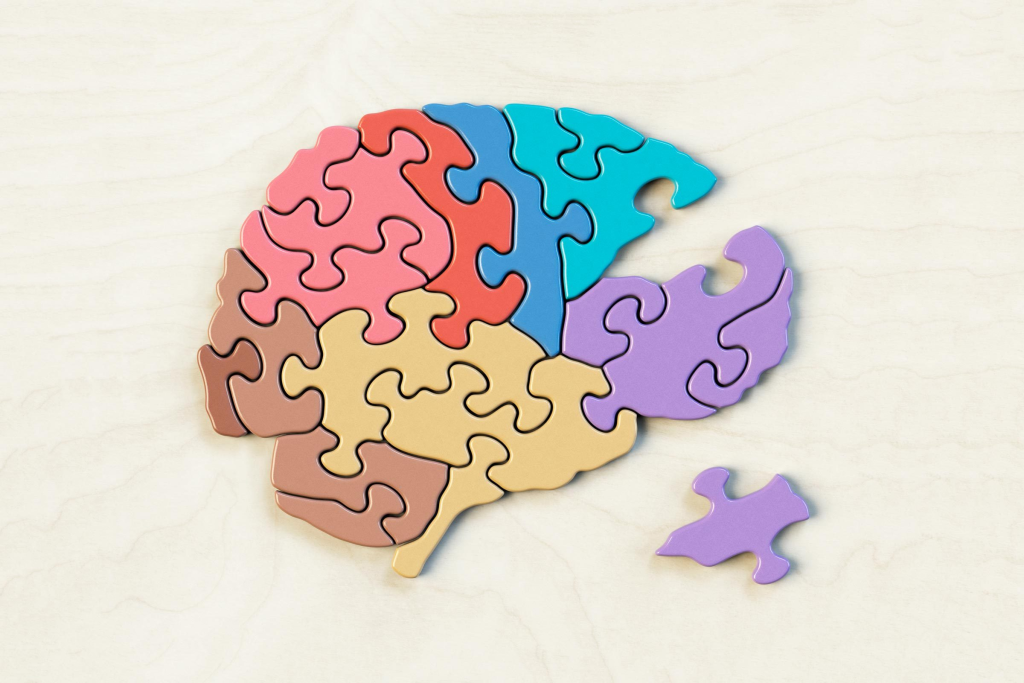Do you know the brain is just 2% of the body’s weight but uses 20% of its energy? That means a sluggish morning routine can lead to a sluggish mind all day—especially in kids. But here’s the good news: with just 10 to 15 minutes of simple brain-boosting exercises before school, children can improve concentration, enhance memory, and start their day with focus and energy.

What Can Happen After 30 Days of Brain-Boosting Exercises for Kids
| Benefit | What You May Notice |
|---|---|
| Improved Focus | Better attention span during classes and while doing homework |
| Enhanced Academic Skills | Boost in reading fluency, memory recall, and math problem-solving |
| Better Coordination | Improved balance, handwriting, and cross-body movement awareness |
| Reduced Morning Anxiety | Calmer mood before school; fewer meltdowns or resistance during morning routine |
| Faster Mental Processing | Quicker response time in classroom discussions and assignments |
| Increased Confidence | More participation in class due to better readiness and mental alertness |
| Improved Sleep Quality | Better sleep patterns due to regulated circadian rhythm and reduced daily stress |
| Sharper Communication | Improved verbal fluency and listening comprehension |
| More Consistency | Development of a focused, structured morning habit that encourages independence |
| Stronger Parent-Child Bond | Morning routines become shared moments of connection, fun, and learning |
Why Morning Brain Exercises Matter
The morning sets the tone for the entire day. While breakfast fuels the body, brain exercises ignite mental alertness. Studies show that kids who engage in short bursts of cognitive or physical activity in the morning perform better in school, especially in tasks involving reading and problem-solving.
Myth Busted: “Kids are naturally energetic—they don’t need brain warm-ups.”
Truth: Physical energy doesn’t always mean mental readiness. The brain needs specific stimulation to transition from rest to learning mode.
1. Cross-Crawl Movements – Boost Coordination & Focus

Cross-crawls involve moving opposite limbs together—like touching your right elbow to your left knee.
- Why it works: Stimulates both brain hemispheres, improves coordination, and strengthens neural pathways.
- How to do it: March in place, lifting knees high, and alternate elbows to knees for 1–2 minutes.
Fun Fact: Cross-body movements are known to improve reading fluency and mathematical processing in children.
2. Brain Walks – Walking with a Mental Twist

Take a quick 5-minute walk while engaging the brain with light tasks.
- Examples: Recite times tables, spell words backward, or play “I spy” with shapes and colors.
- Why it works: Combines physical movement with cognitive engagement—activating both the prefrontal cortex and motor regions.
3. Simple Morning Yoga – Calm the Mind, Sharpen the Focus

Yoga isn’t just for adults. Kids benefit immensely from poses that increase blood flow to the brain.
- Try these poses: Tree Pose (for balance), Cat-Cow (to energize the spine), and Downward Dog (to improve circulation).
- Bonus: End with 1 minute of deep breathing to calm the nervous system.
Did You Know? Just 4 minutes of mindful breathing can significantly reduce cortisol levels and improve test performance.
4. Pattern Clapping – Memory & Rhythm Game

This quick game can be both fun and stimulating.
- How to do it: Start with a simple clapping pattern (e.g., clap-snap-clap), then gradually increase complexity.
- Why it works: Enhances auditory memory, attention span, and rhythm synchronization.
Brain Boost Tip: Add verbal elements—like clapping to spell the child’s name—to enhance language development.
5. Visual Tracking Drills – Strengthen Reading Skills

Have your child follow a moving object with just their eyes—not moving their head.
- Use a pencil or finger: Move it in smooth patterns—side to side, diagonally, and in circles.
- Why it works: Improves eye movement control, which is crucial for fluent reading and writing.
Interesting Fact: Kids with strong visual tracking skills tend to have higher reading comprehension scores.
6. Brain Teaser Warm-Ups – Activate Problem-Solving Mode

Before grabbing the school bag, give the brain a quick challenge.
- Examples: Riddles, mini puzzles, or mental math (e.g., What’s 25 x 4 – 10?).
- Why it works: Engages logic, sequencing, and processing speed—all essential classroom skills.
7. Dance & Freeze – Energize While Improving Control

Play music and let your child dance freely, but they must freeze instantly when the music stops.
- Why it works: Boosts physical energy, enhances impulse control, and supports listening skills.
- Tip: Incorporate academic content by shouting out math questions or vocabulary words during “freeze” moments.
Fun Add-on: Try different music genres to stimulate auditory and emotional centers of the brain!
8. Sunshine Stretches – Wake Up the Body & Brain
If the weather allows, take 3–5 minutes outdoors for basic stretching in natural light.
- Why it works: Morning sunlight helps regulate the circadian rhythm, improves mood, and increases alertness through vitamin D exposure.
- Bonus Activity: Encourage your child to name things they see, hear, or smell—activating sensory awareness.
Quick Sample Morning Brain-Boost Routine (10 Minutes)
- Cross-Crawl March – 2 min
- Tree Pose + Deep Breaths – 1 min
- Pattern Clapping with Spelling – 1 min
- Brain Teaser (1 riddle or puzzle) – 2 min
- Dance & Freeze Game – 2 min
- Sunshine Stretch + Name 3 things – 2 min
Final Thoughts: Small Steps, Big Results
You don’t need a long or complicated routine to boost your child’s brain power. Just a few targeted activities can help them start the day sharper, calmer, and more focused. The best part? These exercises can be fun, quick, and engaging—turning the morning rush into a mindful ritual.
Remember: The brain, like a muscle, strengthens with daily use. Start small, be consistent, and watch your child thrive academically and emotionally.
Frequently Asked Questions (FAQs)
What are brain-boosting exercises for kids?
Brain-boosting exercises are simple activities that stimulate a child’s mental and physical functions to enhance focus, memory, coordination, and cognitive performance. They include cross-body movements, memory games, yoga, and quick physical routines that activate both hemispheres of the brain.
How long should these exercises take in the morning?
Most brain-boosting routines can be done in just 10 to 15 minutes. The key is consistency and variety. Even short, well-planned activities can make a big difference in how a child performs and feels during the school day.
Are these exercises suitable for all age groups?
Yes. These exercises can be adapted for toddlers, elementary-aged children, and even teens. For younger kids, keep it playful and simple. For older children, increase complexity and add academic content for more engagement.
Can brain exercises replace breakfast?
Absolutely not. While brain exercises stimulate cognitive function, a nutritious breakfast is essential to fuel the body and brain. Both should work together for optimal morning readiness.
How do I motivate my child to do these exercises daily?
Make it fun and interactive. Use music, visuals, games, and positive reinforcement. Let them pick their favorite activities, involve siblings, or turn it into a parent-child bonding moment.
Do these exercises really help with academic performance?
Yes. Studies show that children who engage in brief morning physical and cognitive activities demonstrate improved attention, memory, reading fluency, and problem-solving skills throughout the school day.
What if we’re running late in the morning?
No worries! Even a 2-minute session with a few cross-crawls, deep breaths, or a quick clapping game can help jumpstart the brain. Some is always better than none.
Can these routines be done at school instead of at home?
Yes. These routines are versatile and can easily be implemented during morning homeroom, classroom warm-ups, or P.E. sessions—anywhere kids need a mental wake-up call.





